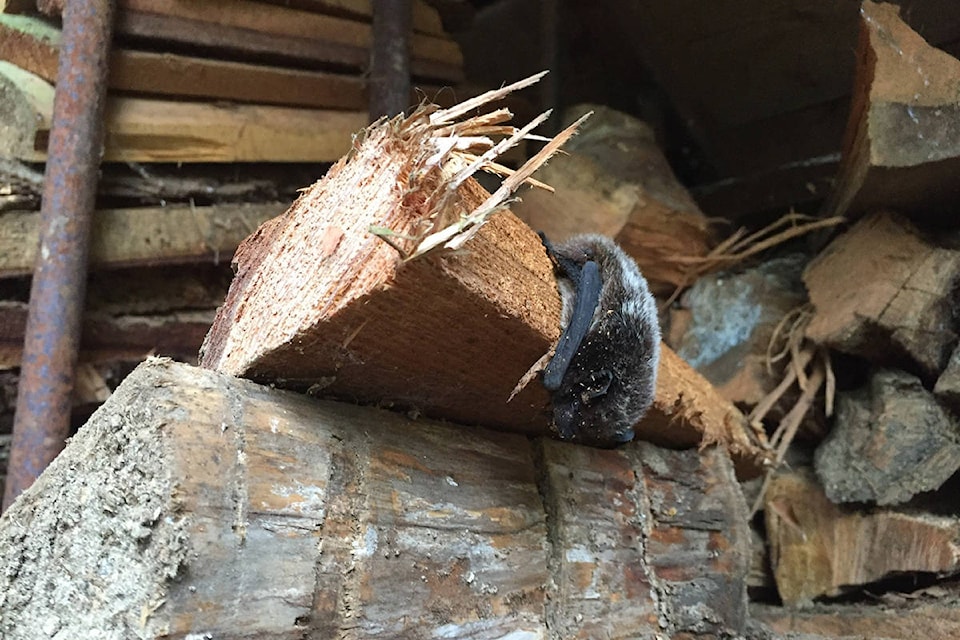Rick Stiebel/News Gazette staff
When it comes to research on bats, the scoop is in the poop.
Habitat Acquisition Trust volunteers and Bat habitat stewards are collecting bat guano, i.e. bat excrement, from beneath bat roosts for genetic analysis to determine the species of bats living at each roost.
The analysis, coupled with Echometers, listening devices that that interpret bat calls, enables HAT to compile a more comprehensive understanding of bat populations without disturbing roosts or physically capturing them.
Echometers are particularly useful because they can pick up bats roosting in nearby trees because the devices can narrow the calls down to several different species.
Some of the bat colonies HAT’s team monitors are home to multiple species. At one particular site, Yuma and Little Brown Myotis bats co-exist peacefully in the same roost, said Paige Erickson-McGee with HAT.
During the 2015 collection season, 151 guano samples from across the province, of which 135 yielded successful DNA analysis. Eighty of those were Little Brown Myotis, with 21 indicating Yuma Myotis and 16 Big Brown bats. The rest included two California Myotis, five long-legged Myotis, seven long-eared Myotis, and one Silver-Haired bat.
Each species has different characteristics as part of their roles and adaptations to their surroundings.
Little Brown bats forage over calm waters like lakes and ponds and feed primarily on tiny insects without hard shells, such as midges, caddisflies and moths. Big Brown bats forage mainly above fields, in trees, water and open spaces, focusing on moths, beetles, carpenter ants, termites and other insects.
California Myotis is one of the smallest species in B.C., with maternity colonies for pup rearing usually only having about 20 individuals.
Long-legged Myotis are active throughout the night, even during cold weather. Silver haired bats are solitary tree roosters, making their homes in forests and grasslands in logs, beneath bark and in abandoned woodpecker holes. Long-eared Myotis have been recorded hibernating in caves and mines in the western U.S., so keeping an eye open for them in the winter helps with information gathering. If you observe bats roosting during the winter, please email bat@hat.bc.ca to help with gathering a better understanding of the winter-time habits of these creatures on South Vancouver Island and the Gulf Islands.
HAT’s Community Bat program is funded by LUSH, MEC, (Montain Equipment Co-op) the Habitat Conservation Trust Foundation and individual donations. If you would like to make a contribution, you can donate online at hat.bc.ca/bats, or call 250-995-2428.
